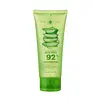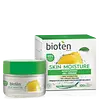What's inside
What's inside
 Key Ingredients
Key Ingredients

 Benefits
Benefits

 Concerns
Concerns

 Ingredients Side-by-side
Ingredients Side-by-side

Water
Skin ConditioningAlcohol
AntimicrobialPropylene Glycol
HumectantDipropylene Glycol
HumectantCarbomer
Emulsion StabilisingAloe Barbadensis Leaf Juice
Skin ConditioningTromethamine
BufferingC12-14 Pareth-12
Emulsifying1,2-Hexanediol
Skin ConditioningButylene Glycol
HumectantCaprylyl Glycol
EmollientPentylene Glycol
Skin ConditioningBetaine
HumectantHydroxyacetophenone
AntioxidantParfum
MaskingLinalool
PerfumingLimonene
PerfumingGlycerin
HumectantDisodium EDTA
Glyceryl Polyacrylate
Sodium Hyaluronate
HumectantPolyglutamic Acid
Skin ConditioningMentha Viridis Extract
MaskingMelilotus Officinalis Extract
AstringentCalendula Officinalis Flower Extract
MaskingEthylhexylglycerin
Skin ConditioningWater, Alcohol, Propylene Glycol, Dipropylene Glycol, Carbomer, Aloe Barbadensis Leaf Juice, Tromethamine, C12-14 Pareth-12, 1,2-Hexanediol, Butylene Glycol, Caprylyl Glycol, Pentylene Glycol, Betaine, Hydroxyacetophenone, Parfum, Linalool, Limonene, Glycerin, Disodium EDTA, Glyceryl Polyacrylate, Sodium Hyaluronate, Polyglutamic Acid, Mentha Viridis Extract, Melilotus Officinalis Extract, Calendula Officinalis Flower Extract, Ethylhexylglycerin
Water
Skin ConditioningGlycerin
HumectantC13-15 Alkane
SolventPhenyl Trimethicone
Skin ConditioningSodium Acrylates Copolymer
Propanediol
SolventHydrolyzed Soy Protein
HumectantSodium Hyaluronate
HumectantAllantoin
Skin ConditioningAlpha-Glucan Oligosaccharide
CleansingArginine
MaskingAscorbic Acid
AntioxidantAscorbyl Palmitate
AntioxidantBisabolol
MaskingButylene Glycol
HumectantCaprylic/Capric Triglyceride
MaskingCaprylyl Glycol
EmollientChondrus Crispus Powder
AbrasiveCitric Acid
BufferingDiethylhexyl Syringylidenemalonate
Skin ProtectingDisodium EDTA
Ethylhexylglycerin
Skin ConditioningFructose
HumectantGlucose
HumectantGlyceryl Laurate
EmollientGlyceryl Oleate Citrate
EmulsifyingHydrolyzed Wheat Protein
Skin ConditioningLecithin
EmollientMaltose
MaskingPanthenol
Skin ConditioningParfum
MaskingPectin
Emulsion StabilisingPEG-8
HumectantPentylene Glycol
Skin ConditioningProline
Skin ConditioningPyrus Cydonia Fruit Extract
Skin ConditioningSerine
MaskingSodium Chloride
MaskingSodium Hydroxide
BufferingSodium Lactate
BufferingSodium PCA
HumectantSodium Polyacryloyldimethyl Taurate
Emulsion StabilisingTapioca Starch
Tocopherol
AntioxidantTocopheryl Acetate
AntioxidantTrehalose
HumectantUrea
BufferingXanthan Gum
EmulsifyingPhenoxyethanol
PreservativeWater, Glycerin, C13-15 Alkane, Phenyl Trimethicone, Sodium Acrylates Copolymer, Propanediol, Hydrolyzed Soy Protein, Sodium Hyaluronate, Allantoin, Alpha-Glucan Oligosaccharide, Arginine, Ascorbic Acid, Ascorbyl Palmitate, Bisabolol, Butylene Glycol, Caprylic/Capric Triglyceride, Caprylyl Glycol, Chondrus Crispus Powder, Citric Acid, Diethylhexyl Syringylidenemalonate, Disodium EDTA, Ethylhexylglycerin, Fructose, Glucose, Glyceryl Laurate, Glyceryl Oleate Citrate, Hydrolyzed Wheat Protein, Lecithin, Maltose, Panthenol, Parfum, Pectin, PEG-8, Pentylene Glycol, Proline, Pyrus Cydonia Fruit Extract, Serine, Sodium Chloride, Sodium Hydroxide, Sodium Lactate, Sodium PCA, Sodium Polyacryloyldimethyl Taurate, Tapioca Starch, Tocopherol, Tocopheryl Acetate, Trehalose, Urea, Xanthan Gum, Phenoxyethanol
 Reviews
Reviews

Ingredients Explained
These ingredients are found in both products.
Ingredients higher up in an ingredient list are typically present in a larger amount.
Butylene Glycol (or BG) is used within cosmetic products for a few different reasons:
Overall, Butylene Glycol is a safe and well-rounded ingredient that works well with other ingredients.
Though this ingredient works well with most skin types, some people with sensitive skin may experience a reaction such as allergic rashes, closed comedones, or itchiness.
Learn more about Butylene GlycolCaprylyl Glycol is a humectant and emollient, meaning it attracts and preserves moisture.
It is a common ingredient in many products, especially those designed to hydrate skin. The primary benefits are retaining moisture, skin softening, and promoting a healthy skin barrier.
Though Caprylyl Glycol is an alcohol derived from fatty acids, it is not the kind that can dry out skin.
This ingredient is also used as a preservative to extend the life of products. It has slight antimicrobial properties.
Learn more about Caprylyl GlycolDisodium EDTA plays a role in making products more stable by aiding other preservatives.
It is a chelating agent, meaning it neutralizes metal ions that may be found in a product.
Disodium EDTA is a salt of edetic acid and is found to be safe in cosmetic ingredients.
Learn more about Disodium EDTAEthylhexylglycerin (we can't pronounce this either) is commonly used as a preservative and skin softener. It is derived from glyceryl.
You might see Ethylhexylglycerin often paired with other preservatives such as phenoxyethanol. Ethylhexylglycerin has been found to increase the effectiveness of these other preservatives.
Glycerin is already naturally found in your skin. It helps moisturize and protect your skin.
A study from 2016 found glycerin to be more effective as a humectant than AHAs and hyaluronic acid.
As a humectant, it helps the skin stay hydrated by pulling moisture to your skin. The low molecular weight of glycerin allows it to pull moisture into the deeper layers of your skin.
Hydrated skin improves your skin barrier; Your skin barrier helps protect against irritants and bacteria.
Glycerin has also been found to have antimicrobial and antiviral properties. Due to these properties, glycerin is often used in wound and burn treatments.
In cosmetics, glycerin is usually derived from plants such as soybean or palm. However, it can also be sourced from animals, such as tallow or animal fat.
This ingredient is organic, colorless, odorless, and non-toxic.
Glycerin is the name for this ingredient in American English. British English uses Glycerol/Glycerine.
Learn more about GlycerinParfum is a catch-all term for an ingredient or more that is used to give a scent to products.
Also called "fragrance", this ingredient can be a blend of hundreds of chemicals or plant oils. This means every product with "fragrance" or "parfum" in the ingredients list is a different mixture.
For instance, Habanolide is a proprietary trade name for a specific aroma chemical. When used as a fragrance ingredient in cosmetics, most aroma chemicals fall under the broad labeling category of “FRAGRANCE” or “PARFUM” according to EU and US regulations.
The term 'parfum' or 'fragrance' is not regulated in many countries. In many cases, it is up to the brand to define this term.
For instance, many brands choose to label themselves as "fragrance-free" because they are not using synthetic fragrances. However, their products may still contain ingredients such as essential oils that are considered a fragrance by INCI standards.
One example is Calendula flower extract. Calendula is an essential oil that still imparts a scent or 'fragrance'.
Depending on the blend, the ingredients in the mixture can cause allergies and sensitivities on the skin. Some ingredients that are known EU allergens include linalool and citronellol.
Parfum can also be used to mask or cover an unpleasant scent.
The bottom line is: not all fragrances/parfum/ingredients are created equally. If you are worried about fragrances, we recommend taking a closer look at an ingredient. And of course, we always recommend speaking with a professional.
Learn more about ParfumPentylene glycol is typically used within a product to thicken it. It also adds a smooth, soft, and moisturizing feel to the product. It is naturally found in plants such as sugar beets.
The hydrophilic trait of Pentylene Glycol makes it a humectant. As a humectant, Pentylene Glycol helps draw moisture from the air to your skin. This can help keep your skin hydrated.
This property also makes Pentylene Glycol a great texture enhancer. It can also help thicken or stabilize a product.
Pentylene Glycol also acts as a mild preservative and helps to keep a product microbe-free.
Some people may experience mild eye and skin irritation from Pentylene Glycol. We always recommend speaking with a professional about using this ingredient in your routine.
Pentylene Glycol has a low molecular weight and is part of the 1,2-glycol family.
Learn more about Pentylene GlycolSodium Hyaluronate is hyaluronic acid's salt form. It is commonly derived from the sodium salt of hyaluronic acid.
Like hyaluronic acid, it is great at holding water and acts as a humectant. This makes it a great skin hydrating ingredient.
Sodium Hyaluronate is naturally occurring in our bodies and is mostly found in eye fluid and joints.
These are some other common types of Hyaluronic Acid:
Learn more about Sodium HyaluronateWater. It's the most common cosmetic ingredient of all. You'll usually see it at the top of ingredient lists, meaning that it makes up the largest part of the product.
So why is it so popular? Water most often acts as a solvent - this means that it helps dissolve other ingredients into the formulation.
You'll also recognize water as that liquid we all need to stay alive. If you see this, drink a glass of water. Stay hydrated!
Learn more about Water